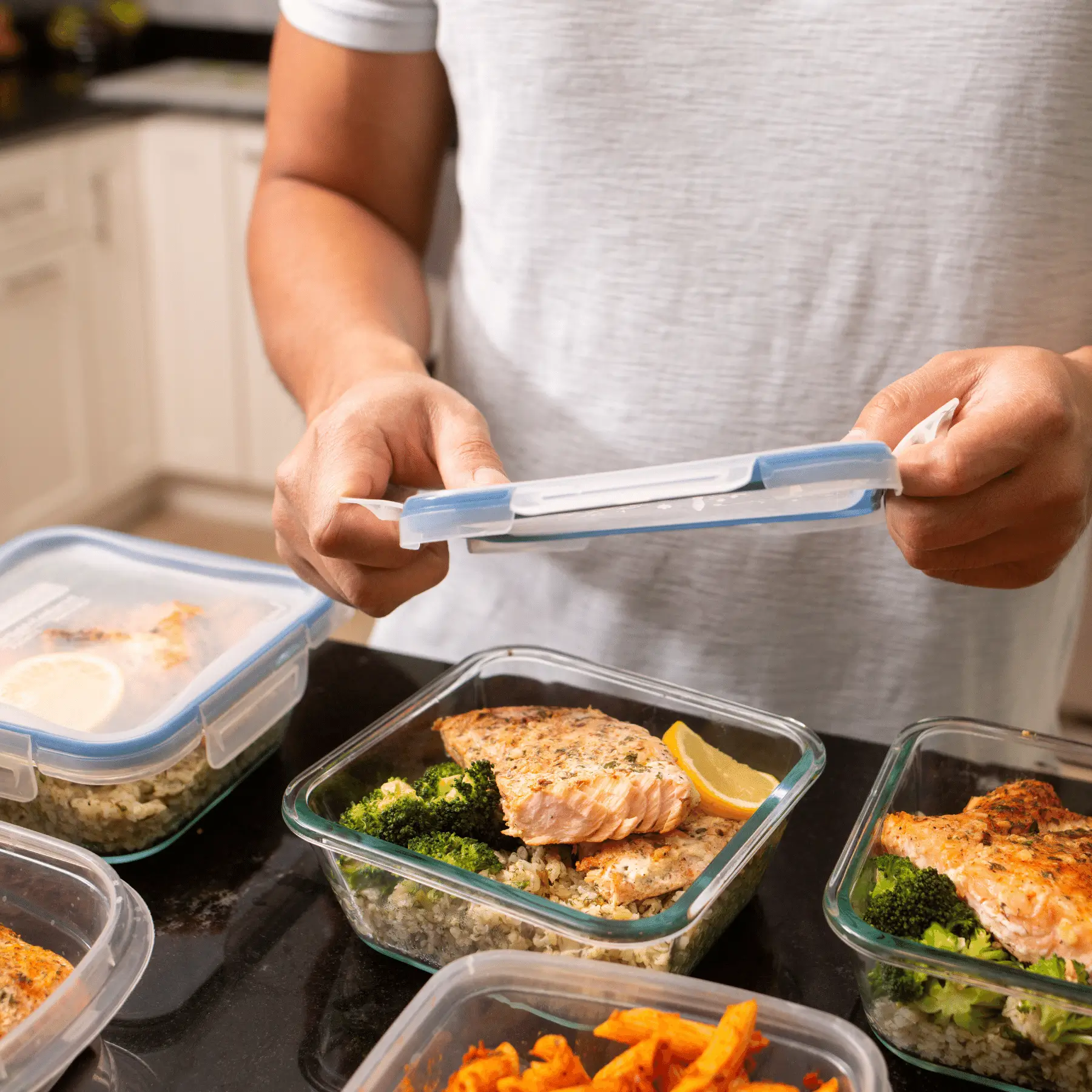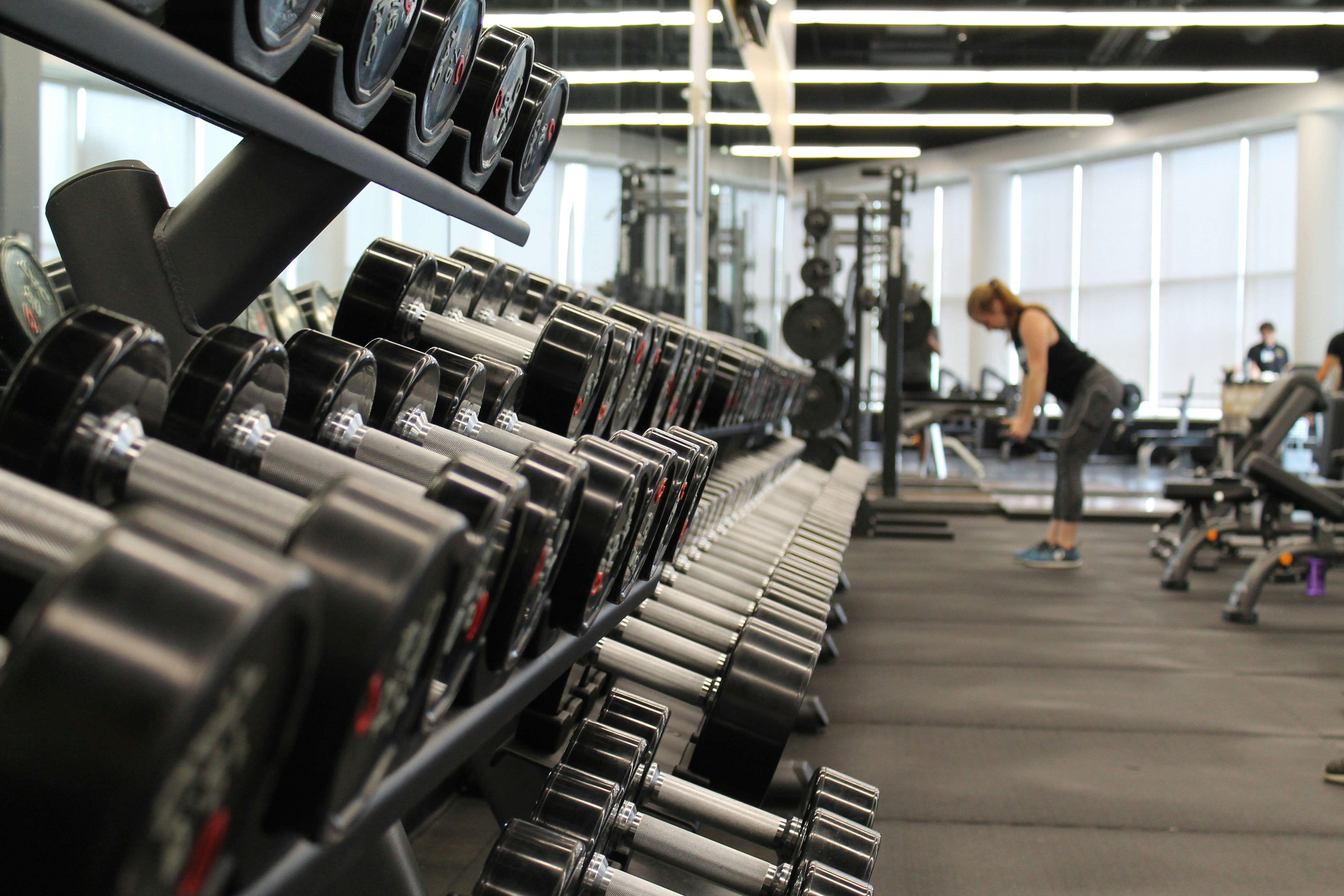
Blog
04 June 2024
The Ultimate Guide to Meal Prepping for a Healthy Lifestyle

Blog
04 June 2024
The Ultimate Guide to Meal Prepping for a Healthy Lifestyle
Meal prepping is a game-changer for anyone looking to maintain a healthy lifestyle. By planning and preparing your meals in advance, you can save time, reduce stress, and ensure you’re eating nutritious food throughout the week. Here’s a comprehensive guide to help you get started with meal prepping.
Introduction
Importance of Meal Prepping
Saves time and reduces daily cooking stress
Helps maintain a balanced diet
Prevents unhealthy eating habits and impulsive food choices
Benefits of Meal Prepping
Portion control
Cost-effective
Reduces food waste
Step 1: Planning Your Meals
Set Your Goals
Determine your nutritional needs (calories, macros, etc.)
Align your meals with your fitness goals (weight loss, muscle gain, maintenance)
Choose Your Recipes
Select recipes that are simple and fit your dietary preferences
Consider variety to avoid meal fatigue
Create a Shopping List
List all ingredients needed for the week
Check what you already have to avoid duplicates
Step 2: Shopping Smart
Tips for Effective Grocery Shopping
Stick to your list to avoid impulse buys
Buy in bulk for staple items (rice, oats, etc.)
Opt for seasonal produce to save money and ensure freshness
Healthy Staples to Stock Up On
Proteins: chicken breast, lean beef, tofu, beans
Carbohydrates: brown rice, quinoa, sweet potatoes
Vegetables: broccoli, spinach, bell peppers
Healthy Fats: avocados, nuts, olive oil
Step 3: Prepping Your Meals
Prep Time and Tools Needed
Set aside a few hours for meal prepping
Essential tools: sharp knives, cutting board, storage containers, measuring cups
Cooking in Batches
Cook large quantities of proteins, grains, and vegetables
Use sheet pans and slow cookers to save time
Portioning and Storing
Divide meals into individual portions
Use airtight containers to keep food fresh
Label containers with the date and meal name
Step 4: Storing and Reheating
Proper Storage Techniques
Store meals in the refrigerator if consuming within a few days
Freeze meals that you plan to eat later in the week
Reheating Tips
Use a microwave or stovetop to reheat meals evenly
Add a splash of water to prevent dryness, especially for grains
Step 5: Staying Consistent
Tracking Your Meals
Use a meal tracking app to log your food intake
Monitor your progress and make adjustments as needed
Tips for Staying Motivated
Rotate recipes to keep things interesting
Involve friends or family in meal prepping
Celebrate small successes and stay focused on your goals
Conclusion
Meal prepping is a powerful tool for maintaining a healthy lifestyle. By planning your meals, shopping smart, and staying consistent, you can ensure that you’re eating nutritious food every day without the hassle. Start your meal prepping journey today and enjoy the benefits of a well-organized, healthy diet!
Introduction
Importance of Meal Prepping
Saves time and reduces daily cooking stress
Helps maintain a balanced diet
Prevents unhealthy eating habits and impulsive food choices
Benefits of Meal Prepping
Portion control
Cost-effective
Reduces food waste
Step 1: Planning Your Meals
Set Your Goals
Determine your nutritional needs (calories, macros, etc.)
Align your meals with your fitness goals (weight loss, muscle gain, maintenance)
Choose Your Recipes
Select recipes that are simple and fit your dietary preferences
Consider variety to avoid meal fatigue
Create a Shopping List
List all ingredients needed for the week
Check what you already have to avoid duplicates
Step 2: Shopping Smart
Tips for Effective Grocery Shopping
Stick to your list to avoid impulse buys
Buy in bulk for staple items (rice, oats, etc.)
Opt for seasonal produce to save money and ensure freshness
Healthy Staples to Stock Up On
Proteins: chicken breast, lean beef, tofu, beans
Carbohydrates: brown rice, quinoa, sweet potatoes
Vegetables: broccoli, spinach, bell peppers
Healthy Fats: avocados, nuts, olive oil
Step 3: Prepping Your Meals
Prep Time and Tools Needed
Set aside a few hours for meal prepping
Essential tools: sharp knives, cutting board, storage containers, measuring cups
Cooking in Batches
Cook large quantities of proteins, grains, and vegetables
Use sheet pans and slow cookers to save time
Portioning and Storing
Divide meals into individual portions
Use airtight containers to keep food fresh
Label containers with the date and meal name
Step 4: Storing and Reheating
Proper Storage Techniques
Store meals in the refrigerator if consuming within a few days
Freeze meals that you plan to eat later in the week
Reheating Tips
Use a microwave or stovetop to reheat meals evenly
Add a splash of water to prevent dryness, especially for grains
Step 5: Staying Consistent
Tracking Your Meals
Use a meal tracking app to log your food intake
Monitor your progress and make adjustments as needed
Tips for Staying Motivated
Rotate recipes to keep things interesting
Involve friends or family in meal prepping
Celebrate small successes and stay focused on your goals
Conclusion
Meal prepping is a powerful tool for maintaining a healthy lifestyle. By planning your meals, shopping smart, and staying consistent, you can ensure that you’re eating nutritious food every day without the hassle. Start your meal prepping journey today and enjoy the benefits of a well-organized, healthy diet!
Meal prepping is a game-changer for anyone looking to maintain a healthy lifestyle. By planning and preparing your meals in advance, you can save time, reduce stress, and ensure you’re eating nutritious food throughout the week. Here’s a comprehensive guide to help you get started with meal prepping.
Introduction
Importance of Meal Prepping
Saves time and reduces daily cooking stress
Helps maintain a balanced diet
Prevents unhealthy eating habits and impulsive food choices
Benefits of Meal Prepping
Portion control
Cost-effective
Reduces food waste
Step 1: Planning Your Meals
Set Your Goals
Determine your nutritional needs (calories, macros, etc.)
Align your meals with your fitness goals (weight loss, muscle gain, maintenance)
Choose Your Recipes
Select recipes that are simple and fit your dietary preferences
Consider variety to avoid meal fatigue
Create a Shopping List
List all ingredients needed for the week
Check what you already have to avoid duplicates
Step 2: Shopping Smart
Tips for Effective Grocery Shopping
Stick to your list to avoid impulse buys
Buy in bulk for staple items (rice, oats, etc.)
Opt for seasonal produce to save money and ensure freshness
Healthy Staples to Stock Up On
Proteins: chicken breast, lean beef, tofu, beans
Carbohydrates: brown rice, quinoa, sweet potatoes
Vegetables: broccoli, spinach, bell peppers
Healthy Fats: avocados, nuts, olive oil
Step 3: Prepping Your Meals
Prep Time and Tools Needed
Set aside a few hours for meal prepping
Essential tools: sharp knives, cutting board, storage containers, measuring cups
Cooking in Batches
Cook large quantities of proteins, grains, and vegetables
Use sheet pans and slow cookers to save time
Portioning and Storing
Divide meals into individual portions
Use airtight containers to keep food fresh
Label containers with the date and meal name
Step 4: Storing and Reheating
Proper Storage Techniques
Store meals in the refrigerator if consuming within a few days
Freeze meals that you plan to eat later in the week
Reheating Tips
Use a microwave or stovetop to reheat meals evenly
Add a splash of water to prevent dryness, especially for grains
Step 5: Staying Consistent
Tracking Your Meals
Use a meal tracking app to log your food intake
Monitor your progress and make adjustments as needed
Tips for Staying Motivated
Rotate recipes to keep things interesting
Involve friends or family in meal prepping
Celebrate small successes and stay focused on your goals
Conclusion
Meal prepping is a powerful tool for maintaining a healthy lifestyle. By planning your meals, shopping smart, and staying consistent, you can ensure that you’re eating nutritious food every day without the hassle. Start your meal prepping journey today and enjoy the benefits of a well-organized, healthy diet!



